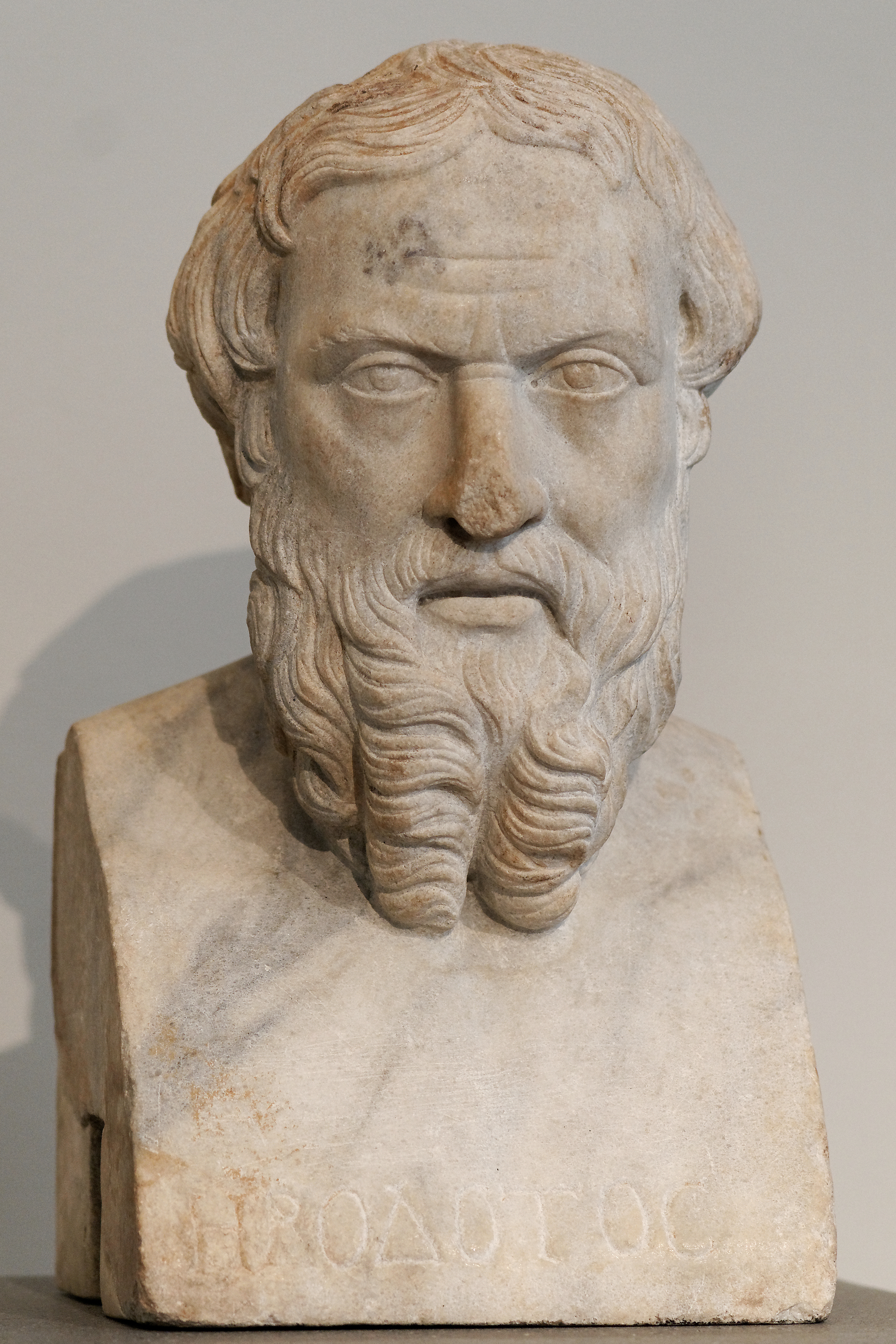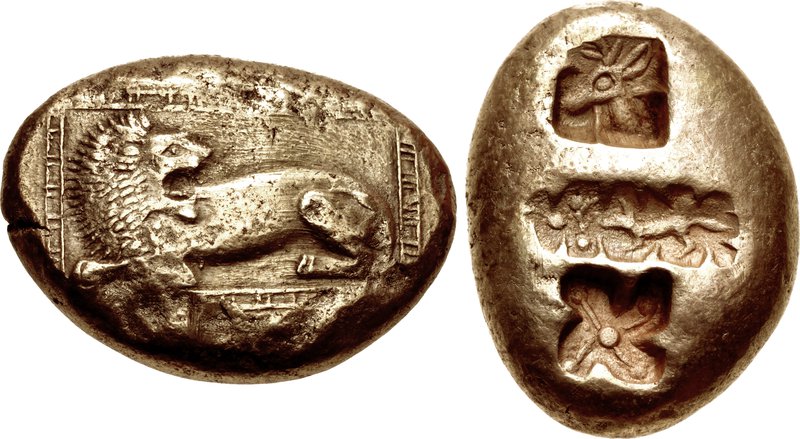|
Ionian Revolt
The Ionian Revolt, and associated revolts in Aeolis, Doris, Cyprus and Caria, were military rebellions by several Greek regions of Asia Minor against Persian rule, lasting from 499 BC to 493 BC. At the heart of the rebellion was the dissatisfaction of the Greek cities of Asia Minor with the tyrants appointed by Persia to rule them, along with the individual actions of two Milesian tyrants, Histiaeus and Aristagoras. The cities of Ionia had been conquered by Persia around 540 BC, and thereafter were ruled by native tyrants, nominated by the Persian satrap in Sardis. In 499 BC, the tyrant of Miletus, Aristagoras, launched a joint expedition with the Persian satrap Artaphernes to conquer Naxos, in an attempt to bolster his position. The mission was a debacle, and sensing his imminent removal as tyrant, Aristagoras chose to incite the whole of Ionia into rebellion against the Persian king Darius the Great. In 498 BC, supported by troops from Athens and Eretria, the Ionians marched ... [...More Info...] [...Related Items...] OR: [Wikipedia] [Google] [Baidu] |
Otanes (son Of Sisamnes)
Otanes (Old Persian: ''Utāna'', grc-gre, Ὀτάνης), son of Sisamnes, was an Achaemenid judge and later Satrap of Ionia during the reign of Darius the Great, circa 500 BC. Career Otanes first replaced his father as judge, when the latter was condemned for corruption by Cambyses II. He later took on military responsibilities under Darius, that led him to have an important role in suppressing the Ionian Revolt. In ''Histories'' 5 (''Histories'' 5.25-5.28), Herodotus speaks of an Otanes - a son of a previously mentioned Sisamnes (3.31) - who served as a judge under Cambyses II and later under Darius I, who followed the European Scythian campaign of Darius I, and became governor in Asia Minor: Ionian revolt Otanes succeeded Megabazus as the governor/supreme commander of the united forces of the peoples of the Aegean (5.26.1), and subjugated Byzantium and other cities during the Ionian revolt (5.123.1, 5.116.1). According to Herodotus: According to Herodotus, this Ota ... [...More Info...] [...Related Items...] OR: [Wikipedia] [Google] [Baidu] |
Greco-Persian Wars
The Greco-Persian Wars (also often called the Persian Wars) were a series of conflicts between the Achaemenid Empire and Greek city-states that started in 499 BC and lasted until 449 BC. The collision between the fractious political world of the Greeks and the enormous empire of the Persians began when Cyrus the Great conquered the Greek-inhabited region of Ionia in 547 BC. Struggling to control the independent-minded cities of Ionia, the Persians appointed tyrants to rule each of them. This would prove to be the source of much trouble for the Greeks and Persians alike. In 499 BC, the tyrant of Miletus, Aristagoras, embarked on an expedition to conquer the island of Naxos, with Persian support; however, the expedition was a debacle and, preempting his dismissal, Aristagoras incited all of Hellenic Asia Minor into rebellion against the Persians. This was the beginning of the Ionian Revolt, which would last until 493 BC, progressively drawing more regions of Asia Minor into the co ... [...More Info...] [...Related Items...] OR: [Wikipedia] [Google] [Baidu] |
Histiaeus
Histiaeus (, died 493 BC), the son of Lysagoras, was a Greek ruler of Miletus in the late 6th century BC. Histiaeus was tyrant of Miletus under Darius I, king of Achaemenid Empire, Persia, who had subjugated Miletus and the other Ionian states in Asia Minor, and who generally appointed Greeks as tyrants to rule the Greek cities of Ionia in his territory. Scythian campaign of Darius I (circa 513 BC) According to Herodotus,Herodotus. (2003). "Histories (Herodotus), The Histories, Book 5." Trans. Aubrey De Selincourt. Rev. John Marincola. London: Penguin Group. Histiaeus, along with the other Chiefs/Tyrants under Darius' rule, took part in the European Scythian campaign of Darius I, Persian expedition against the Scythians, and was put in charge of defending the bridge that Darius' troops had placed across the Danube River. The Scythians attempted to persuade Histiaeus and the others to abandon the bridge; one faction, led by Miltiades the Younger, Miltiades of Athens, at ... [...More Info...] [...Related Items...] OR: [Wikipedia] [Google] [Baidu] |
Naxos Island
Naxos (; el, Νάξος, ) is a Greek island and the largest of the Cyclades. It was the centre of archaic Cycladic culture. The island is famous as a source of emery, a rock rich in corundum, which until modern times was one of the best abrasives available. The largest town and capital of the island is Chora or Naxos City, with 7,374 inhabitants (2011 census). The main villages are Filoti, Apiranthos, Vivlos, Agios Arsenios, Koronos and Glynado. Geography Climate Naxos experiences a Mediterranean climate, with relatively mild winters and warm summers. The Köppen Climate Classification subtype for this climate is "Csa". (Mediterranean Climate). Inland areas of the island are much wetter and cooler in winter. Mythic Naxos According to Greek mythology, the young Zeus was raised in a cave on Mt. Zas ("''Zas''" meaning "''Zeus''"). Homer mentions " Dia"; literally the sacred island "of the Goddess". Károly Kerényi explains: One legend has it that in the ... [...More Info...] [...Related Items...] OR: [Wikipedia] [Google] [Baidu] |
Sardis
Sardis () or Sardes (; Lydian: 𐤳𐤱𐤠𐤭𐤣 ''Sfard''; el, Σάρδεις ''Sardeis''; peo, Sparda; hbo, ספרד ''Sfarad'') was an ancient city at the location of modern ''Sart'' (Sartmahmut before 19 October 2005), near Salihli, in Turkey's Manisa Province. Sardis was the capital of the ancient kingdom of Lydia, an important city of the Persian Empire, the seat of a Seleucid satrap, the seat of a proconsul under the Roman Empire, and the metropolis of the province Lydia in later Roman and Byzantine times. It is mentioned in the New Testament. Its importance was due first to its military strength, secondly to it being situated on an important highway leading from the interior to the Aegean coast, and thirdly to its commanding the wide and fertile plain of the Hermus. Geography Sardis was situated in the middle of Hermus valley, at the foot of Mount Tmolus, a steep and lofty spur which formed the citadel. It was about south of that Hermus. Today, the site is loca ... [...More Info...] [...Related Items...] OR: [Wikipedia] [Google] [Baidu] |
Satrap
A satrap () was a governor of the provinces of the ancient Median and Achaemenid Empires and in several of their successors, such as in the Sasanian Empire and the Hellenistic empires. The satrap served as viceroy to the king, though with considerable autonomy. The word came to suggest tyranny or ostentatious splendour, and in modern usage refers to any subordinate or local ruler, usually with unfavourable connotations of corruption. A satrapy is the territory governed by a satrap. Etymology The word is derived via Latin from Greek ''satrápes'' (), itself borrowed from an Old Iranian ''*khshathra-pa''. In Old Persian, which was the native language of the Achaemenids, it is recorded as ''khshathapavan'' (, literally "protector of the province"). The Median form is reconstructed as ''*khshathrapavan-''. It is cognate with Sanskrit ''kshetrapal'' (). The Biblical Hebrew form is ''aḥashdarpan'' , as found in . In the Parthian (language of the Arsacid Empire) and Middle Persia ... [...More Info...] [...Related Items...] OR: [Wikipedia] [Google] [Baidu] |
Miletus
Miletus (; gr, Μῑ́λητος, Mī́lētos; Hittite transcription ''Millawanda'' or ''Milawata'' (exonyms); la, Mīlētus; tr, Milet) was an ancient Greek city on the western coast of Anatolia, near the mouth of the Maeander River in ancient Ionia. Its ruins are located near the modern village of Balat in Aydın Province, Turkey. Before the Persian rule that started in the 6th century BC, Miletus was considered among the greatest and wealthiest of Greek cities. Evidence of first settlement at the site has been made inaccessible by the rise of sea level and deposition of sediments from the Maeander. The first available evidence is of the Neolithic. In the early and middle Bronze Age the settlement came under Minoan influence. Legend has it that an influx of Cretans occurred displacing the indigenous Leleges, and the site was renamed Miletus after a place in Crete. Recorded history at Miletus begins with the records of the Hittite Empire, and the Mycenaean records of ... [...More Info...] [...Related Items...] OR: [Wikipedia] [Google] [Baidu] |
Tyranny
A tyrant (), in the modern English usage of the word, is an absolute ruler who is unrestrained by law, or one who has usurped a legitimate ruler's sovereignty. Often portrayed as cruel, tyrants may defend their positions by resorting to repressive means. The original Greek term meant an absolute sovereign who came to power without constitutional right, yet the word had a neutral connotation during the Archaic and early Classical periods. However, Greek philosopher Plato saw ''tyrannos'' as a negative word, and on account of the decisive influence of philosophy on politics, its negative connotations only increased, continuing into the Hellenistic period. The philosophers Plato and Aristotle defined a tyrant as a person who rules without law, using extreme and cruel methods against both his own people and others. The ''Encyclopédie'' defined the term as a usurper of sovereign power who makes "his subjects the victims of his passions and unjust desires, which he substitutes ... [...More Info...] [...Related Items...] OR: [Wikipedia] [Google] [Baidu] |
Datis
Datis or Datus ( el, Δάτης, Old Iranian: *Dātiya-, Achaemenid Elamite: Da-ti-ya), was a Median noble and admiral who served the Persian Empire during the reign of Darius the Great. He was familiar with Greek affairs and maintained connections with Greek leaders. He is noted for his joint leadership with the younger Artaphernes of the Persian forces in the first campaign of the Persian Wars against the Greeks. Biography Before the Persian Wars Datis was a Persian commander during the Ionian Revolt. Datis led the counter-offensive against the Ionians in 494 BCE. Datis and another officer named Artaphernes replaced a commander named Mardonius. Datis was ordered to reduce Athens and Eretria to slavery, and bring the Greek slaves before the Achaemenid king. To achieve this, Datis sought to establish a bridgehead on the eastern coast of Greece. In 490 BCE, Datis sailed from the Ionian shoreline to Samos, and then he travelled through the Icarian sea to the islands of Delo ... [...More Info...] [...Related Items...] OR: [Wikipedia] [Google] [Baidu] |
Artaphernes
Artaphernes ( el, Ἀρταφέρνης, Old Persian: Artafarna, from Median ''Rtafarnah''), flourished circa 513–492 BC, was a brother of the Achaemenid king of Persia, Darius I, satrap of Lydia from the capital of Sardis, and a Persian general. In his position he had numerous contacts with the Greeks, and played an important role in suppressing the Ionian Revolt. Biography First contacts with Athens (507 BC) In 507 BC, Artaphernes, as brother of Darius I and Satrap of Asia Minor in his capital Sardis, received an embassy from Athens, probably sent by Cleisthenes, which was looking for Persian assistance in order to resist the threats from Sparta. Artaphernes asked the Athenians for "Earth and Water", a symbol of submission, if they wanted help from the Achaemenid king. The Athenians ambassadors apparently accepted to comply, and to give "Earth and Water". Artaphernes also advised the Athenians that they should receive back the Athenian tyrant Hippias. The Persians threat ... [...More Info...] [...Related Items...] OR: [Wikipedia] [Google] [Baidu] |








